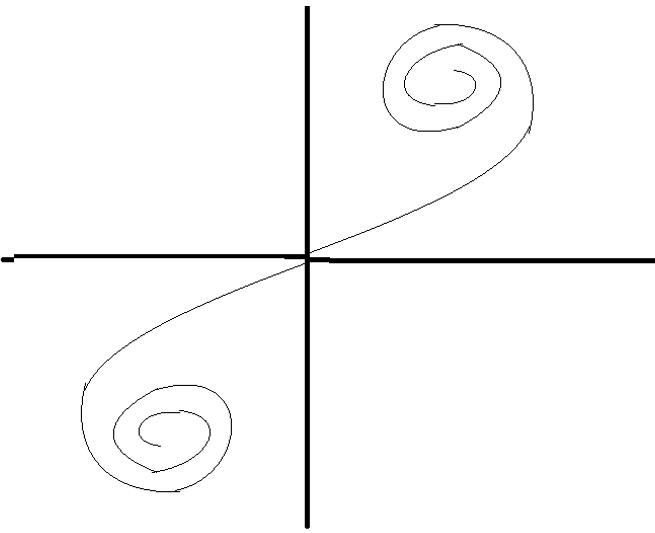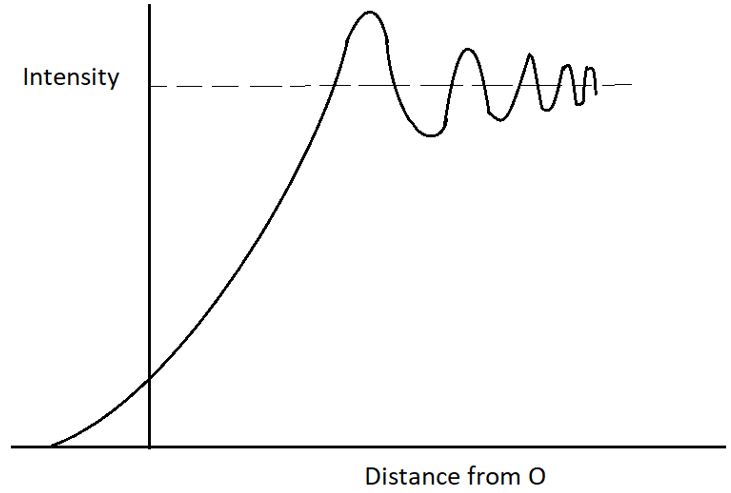This set of Tough Engineering Physics Questions and Answers focuses on “Differences of Fresnel and Fraunhofer Diffraction”.
1. In x lenses are used in Fraunhofer diffraction and y in Fresnel Diffraction, x – y is ________
a) 0
b) 1
c) 2
d) 3
View Answer
Explanation: In Fresnel Diffraction, no lenses are used. The interference takes place between different light waves arriving at a point from the same wavefront. While in Fraunhofer Diffraction, two lenses are used.
2. The incident wavefronts in Fresnel and Fraunhofer Diffraction are respectively _________
a) Planar and Planar
b) Planar and cylindrical
c) Cylindrical and Planar
d) Cylindrical and Cylindrical
View Answer
Explanation: In Fresnel Diffraction the incident wavefronts are cylindrical whereas in Fraunhofer diffraction the incident wavefronts are parallel.
3. The diffraction patterns obtained in Fresnel and Fraunhofer Diffraction are fixed in position.
a) True
b) False
View Answer
Explanation: The Fraunhofer Diffraction pattern is fixed in position while the Fresnel diffraction pattern moves in such a way that directly compensated the shift in the position of the object.
4. What is the variation in the pattern observed for single slit Fresnel diffraction than single slit Fraunhofer Diffraction?
a) The pattern is not hyperbolic
b) The fringes are too thin
c) The region of minimum intensity is not completely dark
d) The fringes are colored
View Answer
Explanation: The diffraction pattern due to the single slit Fresnel Diffraction is similar to single slit Fraunhofer Diffraction, except the regions of minimum intensity are not completely dark. This is so because there is never a complete destructive interference in Fresnel Diffraction.
5. The diffraction pattern changes downstream in Fresnel Diffraction.
a) True
b) False
View Answer
Explanation: In the Fresnel Diffraction pattern, the intensity falls off rapidly without any maxima and minima. While in Fraunhofer Diffraction pattern, this is not the case.
6. The surface of calculation for Fraunhofer and Fresnel diffraction patterns are respectively __________
a) Flat and Flat
b) Spherical and Flat
c) Flat and Spherical
d) Spherical and Spherical
View Answer
Explanation: The surface of the calculation for the Fraunhofer diffraction is spherical while for Fresnel Diffraction it is flat. Also, the observation distance for Fraunhofer diffraction is infinite while for Fresnel Diffraction is finite.
7. Light of 4000 Å is incident on a circular hole of radius 3 cm. How many half-period zones are contained in the circle if the screen is placed at a distance of 0.5 m?
a) 25
b) 250
c) 2500
d) 25000
View Answer
Explanation: In this case, λ = 4000 Å = 4 X 10-5 cm, b = 0.5 m = 50 cm
Therefore, Number of half period zones = \(\frac{1}{λ}\)
= 1/4 X 10-5
= 25000.
8. What does the figure show?

a) Diffraction underwater
b) Diffraction in a magnetic field
c) Cornu’s Spiral
d) Diffraction at a straight edge
View Answer
Explanation: The given figure is called as Cornu’s Spiral. It is an elegant method of investigating the intensity distribution in Fresnel’s diffraction pattern.
9. In Fresnel diffraction, the relative phase difference between the curved wavefront is ________
a) Constant
b) Zero
c) Linearly increasing
d) Non=constant
View Answer
Explanation: Since the radii of each half period zone are different, the distance traveled by each wavefront is different. Thus, the relative phase difference turns out to be non-constant.
10. The following intensity variation graph is for _____________

a) Single slit Diffraction
b) Double slit diffraction
c) Edge Diffraction
d) Cornu’s Spiral
View Answer
Explanation: The diffraction pattern shown is due to diffraction at a straight edge. It shows that the intensity falls off quickly without any maxima and minima. Fresnel Diffraction takes place in this case.
Sanfoundry Global Education & Learning Series – Engineering Physics.
To practice tough questions and answers on all areas of Engineering Physics, here is complete set of 1000+ Multiple Choice Questions and Answers.
If you find a mistake in question / option / answer, kindly take a screenshot and email to [email protected]
